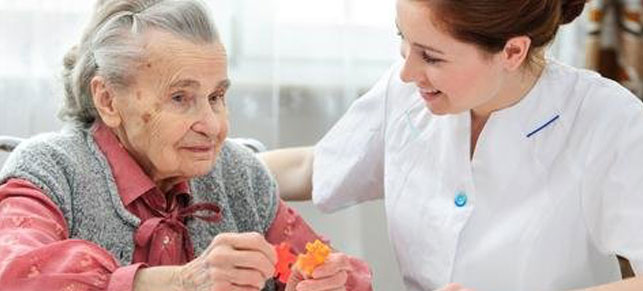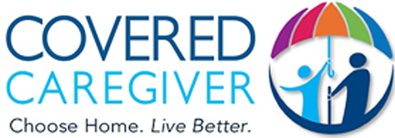 26 Feb 2015
26 Feb 2015
Jewish Guilt And The Senior Home
There’s a constant in the Jewish home, a habit of sorts and by way of tradition, known of course as Jewish Guilt. Some may argue it is scientific, a genetic disposition carried by ancestors for generations and generations. It is the spiritual notion your mother can converse with your inner voice, persuade and convince. Much like a lawyer arguing in feat, no matter how far-reaching the claim, you ponder and are swayed by the illogical powers that be.
You’ve performed well, behaved appropriately, perhaps even sacrificed for the greater good, yet regardless of the efforts your mother is there to point out that it’s just not good enough.
When you were 10 and earned a 98% on your math exam your mother asked what happened to the other 2%?
When you were 25 graduating law school and starting your own firm, your mother questioned, “how come you haven’t placed your unadjusted brother in an endlessly temporary desk job yet?”
And, finally, there was that time in your life when you stood up to your mother and told her you’re an adult! This pointless argument usually happens to Jewish men around the age of 45.
At some point shortly thereafter, though, your new found bravado faces a fork in the road because this is also a time parents are becoming older adults and standing up to them has no purpose since the priorities are shifting. Slowly you watch as they lose the independence they too fought with their parents for. Slowly they begin to depend on you, and not the other way around.
Now imagine a balance in your life not revolving around the constant care of your parent, but where help you can bring on allows you to focus on quality within your relationship.
The life-long brewing of Jewish guilt will dictate it is you who needs to care for your parent. But, think of a more sensible perspective like hiring a caregiver.
Today, family caregivers place an extraordinary burden on themselves with countless hours providing care for their parent; hours spent away from work, burning themselves out in a never-ending cycle of kids, karate, career, and caregiving.
It’s the sandwich generation, stuck in the middle of caring for your kids and your parents, working all the while. You are not experienced in this field, but you do your best – you seek occasional help from a housekeeper or a neighbor and justify your exhaustion before night’s end that this is what a good son or daughter does for mom.
And, one day it will dawn on you that your exhaustion is not providing optimal care for mom. You still have children to raise and a mortgage and bills to pay. You’ve taken all your vacation days, called in for too many sick days and cancelled personal appointments for your own health.
At its worst extent, when the sad day comes when the family member passes, along with mourning and honoring their parent, many overworked and tired adult children are showered with relief and an opportunity to spend time on oneself realizing the endless to-do list is suddenly gone. This is not exactly the way their mom should be respected at that very moment.
A June 2010 National Alliance for Caregiving (NAC) study found that a woman who cares for a loved one will lose $142,693 in wages for leaving the work force early because of caregiving responsibilities. Moreover, estimating lost pensions, retirement funds, and benefits for that time period, the average woman will forfeit $324,044 in total. Referring to a 2006 NAC study, the Center for Disease Control and Prevention emphasizes, “53% of family caregivers who said their health had gotten worse due to caregiving also said the decline in their health has affected their ability to provide care.”
In-home care services, aka caregiving, is a wonderful solution to allowing what’s best for your loved one. Caregivers are experienced, perform tasks that are demanding – and best of all – allow mom or dad to age successfully at home. That way, when you are with your parents they are at their best. And you are, too.
What true value is there to perform sensitive or intimate tasks such assisting with toileting, and bathing? This is a skill set which many senior parents would prefer to be done by trained workers who can show them respect and grace and preserve well-deserved dignity during a time of so much loss of dignity.
Senior Home Care services provide non-medical comprehensive care services, ranging from companionship to personalized specialty care covering the broad spectrum of senior living. Whether the aim is social interaction to enhance the health, happiness and quality of life of seniors; or personal care required for maintaining a high level of independence; or specialty care for debilitating diseases such as dementia and post-fall care, there is no guilt in giving your aging parent the right care they need.
Because when you were 10 years old you conceded in bewilderment at the 2% comment only to be accepted into the college of your choice years later thanks to mom’s always pushing you that extra step.
And when you were 25 years old in a successful firm you took your brother under your wing, making sure he didn’t fall in with the wrong crowd, and he has always thanked you for his first job.
Finally, when you stood up to your mother at 45, you also stood up for her and gave her the right care she knew she could count on you for when she first planted you with that Jewish guilt.
BY: Ohad J, Pearl, MPH
Senior
COMMENTS: No Comments
Have You Fallen In The Last Month?
A new study entitled “More Than Half a Million Older Californians Fell Repeatedly in the Past Year” by the UCLA Center for Health Policy Research, found that in 2012, Californians over the age of 65 visited the Emergency Department (ED) over 185,000 times for falls.
More than 72,000 of those visits led to hospitalizations and, tragically, over 1,800 older Californians died.
An older adult can find themselves living at home comfortably one day, experiencing a fall the next, and being hospitalized hours later. Naturally, that person is discharged days later only to be admitted to a skilled nursing facility for rehabilitation. A person could remain at this outpatient facility for up to 100 days as standard by their health plan, if other complications resulted because of the fall.
During those 100 days, decisions by family members and/or health professionals can result in an older adult finding themselves in the fast lane to losing out on their golden years in a nursing home or assisted living facility and never seeing home again.
This is an all-too-common scenario and costs California over $2 billion annually and moreover, often costs an individual their entire retirement savings.
Instead, consider a pre-fall scenario. Rewind that scenario to see what might occur instead if that older adult and their family had made a senior home care decision and chosen a caregiver option.
The presence of a caregiver with a senior can dramatically reduce falls and, if falls do occur, response times are considerably faster minimizing further injury. The consequences of a fall can be dire: not only is the trauma of the injury a risk, but the initial risks such as hypothermia and muscle damage, as well as hospitalization-associated complications such as pneumonia, blood clots, and pressure sores are other complications that gravely increase the mortality of senior falls.
These consequences can extend an older adult’s 100-day visit in the skilled nursing facility up to a year and can involve multiple transports back and forth to the hospital in that time period.
Home care and caregiver agencies have established a community standard for helping seniors and their families get the help they need to both gain and preserve their control of their independent lifestyles at home. The aforementioned UCLA study recommended “Making home modifications, such as reducing slip and trip risks, since most falls occur inside the person’s home; and modifying high-risk daily routines, such as wearing inappropriate footwear or walking on uneven pavement.”
So at any senior home care service, because they understand the severity of falls, the very first task caregivers take on once they are assigned to an elderly client in their home is to perform a home safety and fall-risk assessment.
The UCLA study states “40% of elders who sought care for a fall said they did not discuss how to avoid future falls with their provider.” Having a senior home care solution (i.e. caregiver) during this crucial timeline changes the equation, completely.
First, a caregiver’s experience and healthcare background lends them to suspect early if an older adult would be prone to falls, allowing them to adjust the care plan to prevent this from occurring. Second, if a fall were to occur, the caregiver is at the senior’s side and can also accompany the senior to the ER visit or throughout the hospitalization — asking the right questions, taking notes and following doctor’s orders on how to avoid future falls.
The study recommends community-wide government aided programs for fall-risk screenings and assessments as the “say-all and do-all.” At the individual level, a more targeted approach might include the use of a caregiver to facilitate their safety and independence.
Provision of in-home care services, through home caregiving, is cost-effective (sometimes 2-3 times less than at a long term facility) and benefits patients by minimizing fall-risk probabilities and facilitating post-fall management success, thus improving their continuity of care and their ability to achieve a speedy and complete home recovery.
BY: Ohad J, Pearl, MPH
Falls
COMMENTS: No Comments
 07 Feb 2015
07 Feb 2015
Who’s Alzheimer’s? Who’s Alzheimer’s? Who’s Alzheimer’s?
By the time you’ve read this paragraph, a late-stage Alzheimer’s patient may have forgotten it. With sadly no cure in sight, what we know about Alzheimer’s are the symptoms its patients suffer from– for those dealing with it, that’s where it begins – and unfortunately at this very moment – that’s where it ends.
Perhaps, facing this hurdle will require us to get a little more intimate with the disease. After all, it affects all of us. According to the shattering statistics reported by the Alzheimer’s Association, 5 million Americans live with the disease, and 1 out of 3 seniors die from the disease or another form of dementia. Furthermore, it is the most expensive condition in the nation.
These numbers actually mean something more significant as they begin to translate into our parents, grandparents, friends and neighbors who are suffering or have suffered from it. The dramatic changes not only affect that person but also forever alter their family.
For now, learning to live with the condition, or guide our family members to live with it, is the only achievable goal. Whether we want to face it or not, this condition is a part of many of our lives. Although working towards a cure would be our ultimate triumph, medically we find ourselves being able to offer not much more today than in 1901 when Alzheimer’s was first observed.
So… who’s Alzheimer?
The account begins with a German-trained physician named Alois Alzheimer who had a passion for psychiatry and neuropathology. Exploring how to combine his research and clinical practice, Alzheimer established his own brain research laboratory at the Munich medical school where he published many papers on conditions and diseases of the brain. This milestone in Alzheimer’s career led to a 1906 lecture, which made him famous in the science and research community and, ultimately, his name has been linked to millions of people evermore.
Alzheimer speaks of his most famous patient, August D., who suffered from symptoms of memory loss, disorientation, hallucinations leading up to and her eventual death at 55. Post-mortem, Alzheimer studied August’s brain and identified an “unusual disease of the cerebral cortex” where never previously described before, nerve “tangles” were observed. His colleague Emil Kraepelin, the founder of modern scientific psychiatry, named those who exhibit these characteristic changes after Alzheimer.
Over 100 years after these findings by Alois Alzheimer, patients suffering from this disease and their families are saddened to hear that there is not much to offer in the ways of cure, or even treatment. That being said, the symptoms are treatable at least through one effective way: caregiving.
Seniors today have more options with senior home care services for Alzheimer’s and dementia than ever before. With nursing homes and assisted living facilities specialized to take on these particular patients, gaining acceptance of the disease as a nation, as a family and as an individual will play a role in how we plan and bring accomplishment to the remaining chapter of our lives; and help not define it as a dreary end.
While we focus on acceptance of Alzheimer’s into our every day lives, there is no denying the economic forecast for these institutions within the senior home care industry. Remember, there is no cure for Alzheimer’s or dementia; and facilities that specialize in this degenerative disease do not or cannot offer a cure.
Consider a similarly effective option of individual, healthcare-credentialed caregivers such as Certified Nursing Assistants (CNAs) or Home Health Aides (HHAs) taking care of patients in their own homes. This promising preference allows seniors and their families to get the help they need to preserve their lives while remaining and aging comfortably at home. Through experienced and trained caregivers, patients have their symptoms managed and prioritized, are provided personal attention and are exposed to 2-3 times less the cost of nursing homes or assisted living facilities.
The first step in accepting Alzheimer’s in our day-to-day is recognizing that good caregiving is the best treatment we can offer; that symptom management, keeping safe in one’s daily routine, and avoiding complications of dementia are the best we can offer at this time. The second step is determining where that caregiving will occur: specialty institutions or home. If you ask most seniors- they choose home. As John Ed Pearce said, “Home is a place you grow up wanting to leave, and grow old wanting to get back to.”
BY: Ohad J, Pearl, MPH
Alzheimer’s
COMMENTS: No Comments
